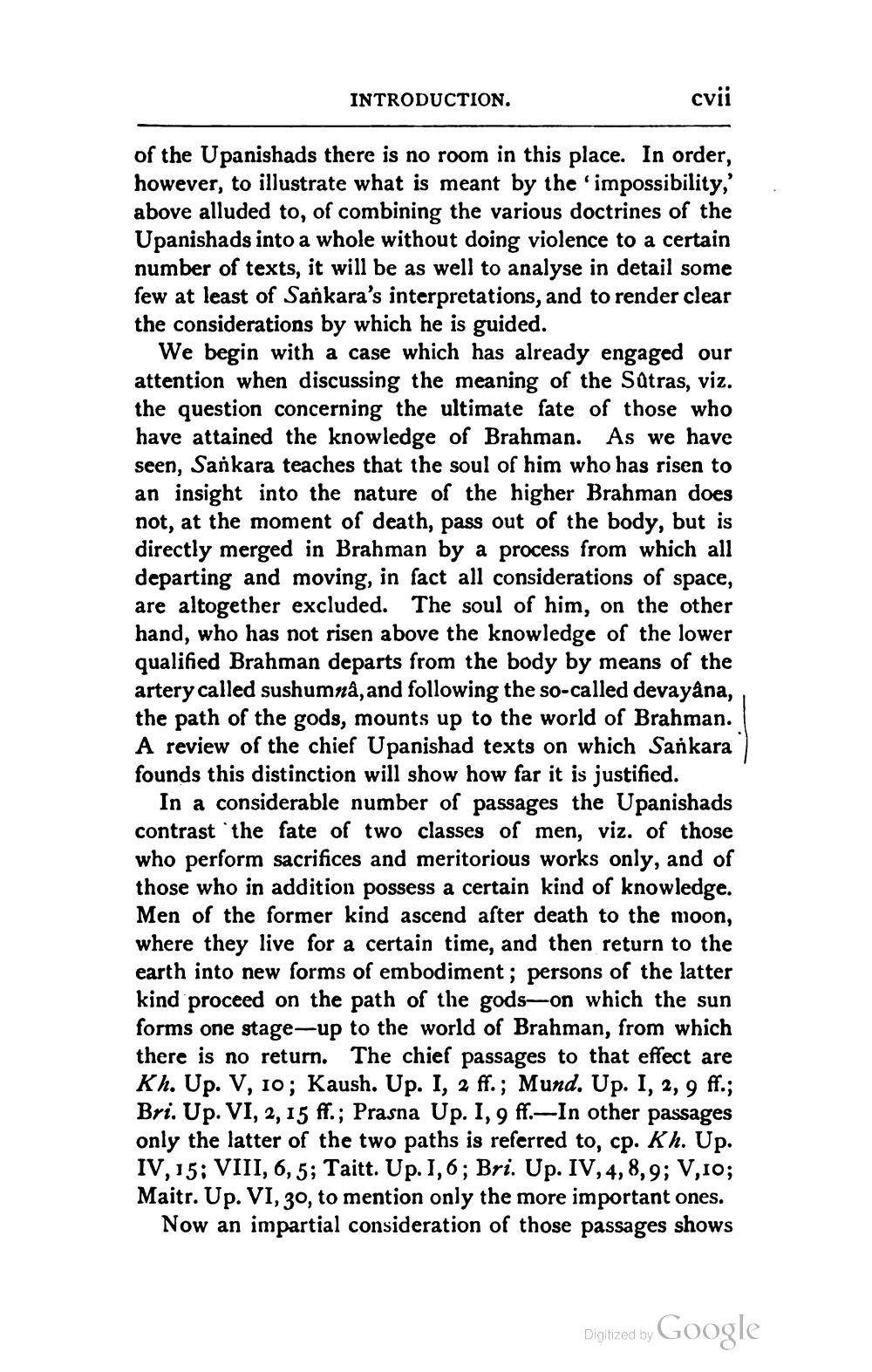________________
INTRODUCTION.
cvii
of the Upanishads there is no room in this place. In order, however, to illustrate what is meant by the 'impossibility, above alluded to, of combining the various doctrines of the Upanishads into a whole without doing violence to a certain number of texts, it will be as well to analyse in detail some few at least of Sankara's interpretations, and to render clear the considerations by which he is guided.
We begin with a case which has already engaged our attention when discussing the meaning of the Satras, viz. the question concerning the ultimate fate of those who have attained the knowledge of Brahman. As we have seen, Sankara teaches that the soul of him who has risen to an insight into the nature of the higher Brahman does not, at the moment of death, pass out of the body, but is directly merged in Brahman by a process from which all departing and moving, in fact all considerations of space, are altogether excluded. The soul of him, on the other hand, who has not risen above the knowledge of the lower qualified Brahman departs from the body by means of the artery called sushumnà, and following the so-called devayâna, the path of the gods, mounts up to the world of Brahman. A review of the chief Upanishad texts on which Sankara founds this distinction will show how far it is justified.
In a considerable number of passages the Upanishads contrast the fate of two classes of men, viz. of those who perform sacrifices and meritorious works only, and of those who in addition possess a certain kind of knowledge. Men of the former kind ascend after death to the moon, where they live for a certain time, and then return to the earth into new forms of embodiment; persons of the latter kind proceed on the path of the gods-on which the sun forms one stage-up to the world of Brahman, from which there is no return. The chief passages to that effect are Kh. Up. V, 10; Kaush. Up. I, 2 ff.; Mund. Up. I, 2,9 ff.; Bri. Up. VI, 2, 15 ff.; Prasna Up. I, 9 ff.-In other passages only the latter of the two paths is referred to, cp. Kh. Up. IV, 15; VIII, 6,5; Taitt. Up. 1,6; Bri. Up. IV, 4, 8,9; 1,10; Maitr. Up. VI, 30, to mention only the more important ones.
Now an impartial consideration of those passages shows
Digitized by
Digized by Google




